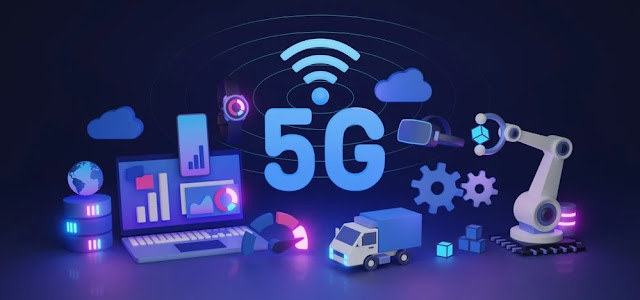Impact of 5G Technology on Network Security
The arrival of 5G technology is transforming how we connect, communicate, and consume data. Offering ultra-fast speeds, reduced latency, and support for billions of connected devices, 5G is the backbone of innovations like autonomous vehicles, smart cities, and the Internet of Things (IoT). However, these advancements come with significant challenges in network security. As organizations, governments, and individuals adapt to this next-generation network, the need for trained professionals is greater than ever. Enrolling in a Cybersecurity Course in Hyderabad can help aspiring defenders equip themselves with the knowledge and tools required to protect 5G infrastructures from emerging threats.
Let’s explore how 5G technology impacts network security and what measures can safeguard our digital future.
1️⃣ Why 5G Is Different: New Architecture, New Risks
Unlike its predecessors, 5G uses a distributed architecture. Traditional centralized data centers are being replaced by edge computing, where data processing happens closer to the source (e.g., sensors, IoT devices). While this improves efficiency, it also expands the attack surface.
⚠ Key concerns:
-
More entry points for attackers due to billions of connected devices.
-
Complex supply chains increase the risk of hardware and software vulnerabilities.
-
Dependence on virtualized networks (e.g., SDN, NFV) introduces new layers susceptible to cyberattacks.
2️⃣ 5G and IoT: A Double-Edged Sword
One of the biggest promises of 5G is enabling IoT at scale. From smart meters to wearable devices, billions of IoT endpoints will communicate over 5G networks. But many IoT devices have weak security or lack regular updates, making them easy targets for attackers.
🔑 Security implications:
-
Botnet creation using vulnerable IoT devices (e.g., Mirai 2.0 on 5G could be catastrophic).
-
Data privacy concerns as sensitive personal and industrial information travels across networks.
-
Difficulty in applying uniform security policies across heterogeneous IoT devices.
3️⃣ Supply Chain and Vendor Risks
5G deployment involves complex hardware and software supply chains from multiple global vendors. This increases the risk of supply chain attacks, where adversaries tamper with equipment or code during manufacturing or delivery.
📌 Examples of threats:
-
Backdoors in hardware components.
-
Firmware implants that can exfiltrate data or disable networks.
-
Nation-state actors targeting critical telecom infrastructure.
Mitigating these risks requires robust vendor vetting, regular audits, and adoption of zero-trust architectures.
4️⃣ Virtualization and Cloud Security in 5G
5G relies heavily on network virtualization through Software-Defined Networking (SDN) and Network Function Virtualization (NFV). While this improves flexibility and reduces costs, it introduces new security challenges:
🔍 Potential vulnerabilities:
-
Malicious access to virtual network functions (VNFs).
-
Misconfigurations that expose APIs and management interfaces.
-
Lateral movement by attackers within virtualized environments.
Securing 5G means securing these virtual layers through segmentation, encryption, and continuous monitoring.
5️⃣ Edge Computing: Securing Data at the Edge
Edge computing nodes in 5G networks process sensitive data near users. These nodes often exist outside traditional data center protections, making them attractive targets for cybercriminals.
📌 Risks at the edge:
-
Physical attacks on edge devices.
-
Rogue nodes inserted by attackers.
-
Inadequate patching of distributed edge infrastructure.
Security strategies include hardware attestation, tamper detection, and secure boot processes for edge components.
6️⃣ The Role of AI in 5G Security (for better or worse)
Artificial Intelligence (AI) and Machine Learning (ML) are integral to managing the complexity of 5G networks. They help detect anomalies, automate responses, and optimize performance. However, attackers can also use AI to:
-
Evade detection through advanced evasion techniques.
-
Launch AI-powered attacks that adapt in real-time.
-
Poison ML models used for network defense.
Thus, securing 5G networks requires AI-driven defenses that are robust against adversarial AI.
7️⃣ Regulatory and Compliance Challenges
5G is expected to carry critical services including healthcare, public safety, and financial data. Ensuring compliance with data protection laws like GDPR, CCPA, and local telecom regulations adds another layer of complexity.
📌 Key points:
-
Cross-border data flows in 5G networks pose jurisdictional challenges.
-
Telecom providers must ensure lawful interception capabilities without introducing vulnerabilities.
-
Adopting privacy-by-design is essential in 5G service development.
8️⃣ Defensive Strategies for 5G Security
Given the complex threat landscape, defending 5G networks requires a multi-layered security approach:
✅ Zero-trust architectures that authenticate and authorize every device and user.
✅ Strong encryption of data in transit and at rest.
✅ Continuous network monitoring with AI-powered threat detection.
✅ Regular security assessments and penetration testing.
✅ Collaborative frameworks between governments, telecom operators, and enterprises.
To implement these measures effectively, organizations need skilled professionals — which is where a quality Ethical Hacking Course in Hyderabad can help. Such training enables cybersecurity experts to think like attackers, identify vulnerabilities, and build stronger defenses for 5G networks.
Conclusion
The impact of 5G on network security is profound. While 5G opens doors to remarkable innovations, it also introduces new vulnerabilities that could have far-reaching consequences if not addressed proactively. From IoT expansion and supply chain complexities to virtualization and edge computing risks, 5G reshapes the cybersecurity landscape.
Organizations must act now to build resilient security frameworks that can handle the demands of 5G. Whether you’re an aspiring cybersecurity professional or a business leader looking to protect your infrastructure, investing in the right knowledge and skills is crucial.




Comments
Post a Comment